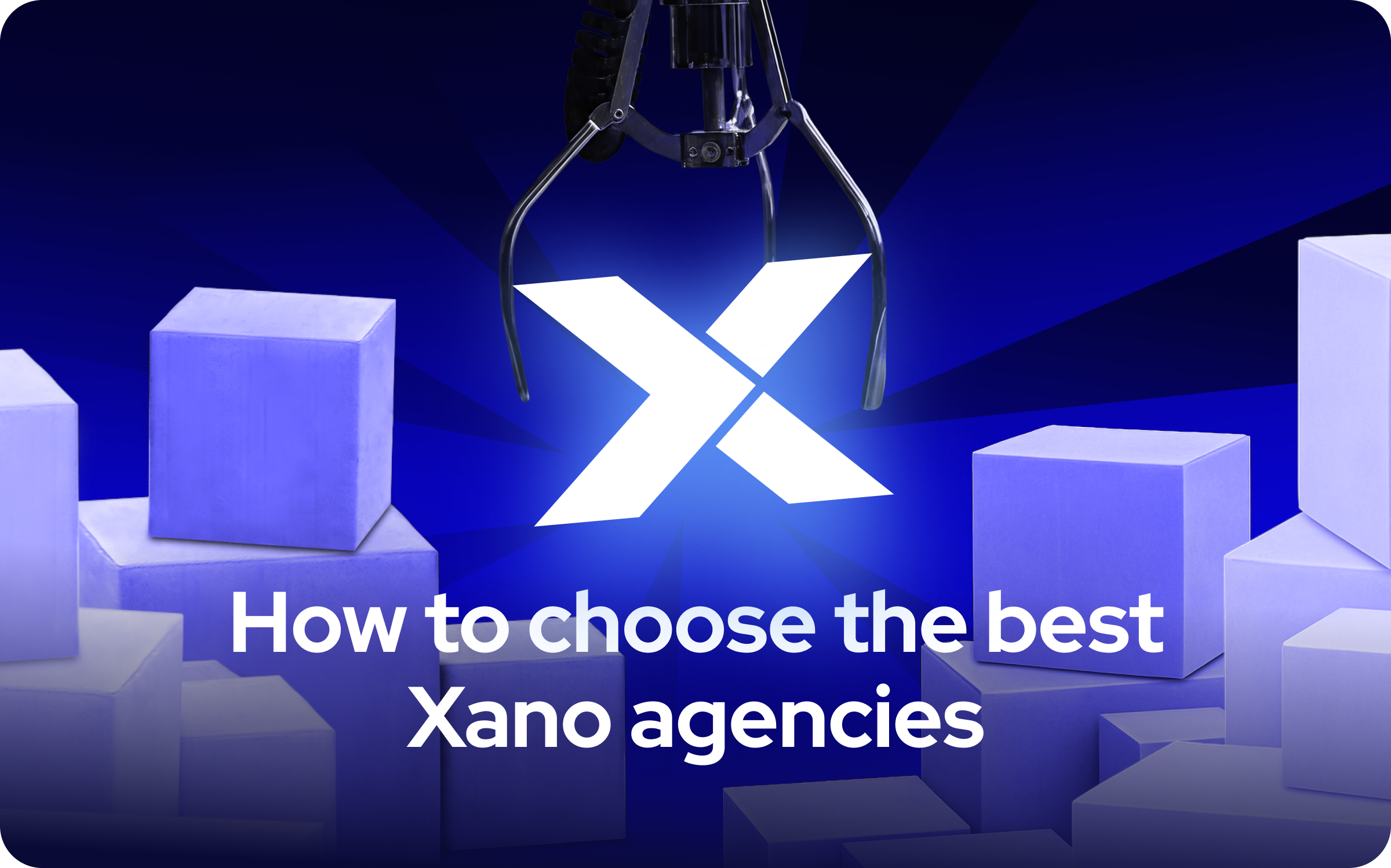
Consider you're a startup founder. You've had a brilliant idea for a business, and you want to launch it to the world. But first, you need to build a minimum viable product (MVP) to test your assumptions, validate your idea, and attract early users and investors. But when you start looking into how to build an MVP, you realize there are dozens of approaches and tools out there, so many that it's hard even to know where to begin. If this sounds familiar, you're not alone. Building a no-code MVP can be daunting.
But with the right MVP tools, you can create a product that meets your needs quickly while letting you stay focused on your goals. In this guide, we’ll examine the top ten MVP tools for startup founders. Let’s jump in—no Code MVP.
What Are No-Code MVP Tools and Their Benefits?

No-code MVP tools allow users to build fully functional digital products—like web applications, mobile apps, e-commerce platforms, and other SaaS solutions—without coding experience. These tools typically feature intuitive drag-and-drop interfaces and pre-built templates that guide users through the design and development process. Instead of relying on complex codebases or hiring developers, no-code tools simplify the process. This enables startups, entrepreneurs, and businesses to prototype and validate their ideas much faster and at a fraction of the cost compared to traditional software development methods.
How Do No-Code MVP Tools Work?
No-code tools operate on a visual development model where users can simply drag and drop various pre-built elements to construct the core functionalities of their applications. For example, with tools like Bubble.io, users can create a web application by selecting text boxes, buttons, or forms and specifying their behavior without worrying about coding the backend. Here’s a simplified process:
Visual Interface
You design the layout and user experience (UX) by arranging elements on a canvas.
Logic & Workflows
Set up workflows and interactions (e.g., clicking a button triggers a specific action).
APIs & Integrations
Many no-code platforms allow for easy API integration into external services, enhancing the app's capabilities. Examples of widely used no-code tools for MVP development include Webflow, Adalo, Airtable, Glide, and Zapier.
Use Cases of No-Code MVP Tools
Website and E-commerce Store Creation
Tools like Webflow and Shopify allow users to create fully functional websites and online stores without technical expertise.
Mobile Apps
Adalo and Thunkable allow users to create native mobile applications for Android and iOS platforms.
Data Management and Databases
Airtable combines the functionalities of a spreadsheet and database, enabling easy management of complex datasets. It is ideal for creating MVPs that rely on structured information.
Benefits of Using No-Code MVP Tools
The benefits of using no-code MVP tools are numerous, particularly for non-technical founders looking to minimize costs and bring their products to market faster.
1. Rapid Iteration and Launch
One of the most significant advantages of no-code tools is the ability to quickly iterate and launch an MVP. Unlike traditional development methods, which can take weeks or months to produce a functioning product, no-code platforms allow you to build a prototype in days or even hours. This speed is critical for startups looking to test their ideas in the market quickly and gather user feedback.
For example, a business founder using Bubble.io can create a fully interactive web app in less than a week, test it with users, and refine the product based on real-time feedback. This agile approach significantly reduces the risk of investing in a product that may not resonate with the target audience.
2. Cost-Efficiency
Traditional app or software development can be expensive, often requiring a team of developers, designers, and project managers. However, no-code tools eliminate the need for coding expertise, allowing non-technical founders to develop their MVPs without hiring a development team. This results in significant cost savings.
For example, hiring a full-stack developer can cost between $80,000 and $150,000 annually. Using no-code tools like Adalo or Webflow might only require a monthly subscription fee of around $50 to $100. Some platforms, such as Airtable, even offer free tiers, allowing startups to begin prototyping without upfront costs.
3. User-Friendly Interfaces
No-code platforms are designed simply, enabling users to create complex applications without technical experience.
Most platforms feature:
- Drag-and-drop builders: These intuitive interfaces allow users to arrange elements like text, buttons, images, and forms visually.
- Pre-built templates: Many tools provide industry-specific templates that give users a head start in creating an MVP. Because of this simplicity, non-technical founders can focus on designing user-friendly experiences without getting bogged down by the technical complexities of development.
4. Customization and Flexibility
While no-code tools simplify the development process, they also offer significant flexibility. Users can customize their MVPs to fit the exact specifications of their business idea. For example, Webflow allows users to build custom, responsive websites tailored to their brand’s needs, while Bubble.io lets users create dynamic web applications with conditional workflows and advanced data structures. Additionally, many no-code platforms provide robust API integrations, enabling founders to connect their MVP to other tools like Stripe for payments or Zapier for automation, further enhancing the functionality of their product.
5. Collaboration and Teamwork
No-code tools also enhance collaboration within teams. Because the platforms are simple, non-technical teams, such as marketing or product management, can easily contribute to developing the MVP.
For example, Figma is a design tool that enables teams to collaborate on prototypes in real-time, ensuring smooth handoffs between designers and developers. Airtable allows teams to manage product data and workflows collaboratively without requiring technical setup. By simplifying the product development process, no-code tools make it easier for teams to work together toward a shared goal of launching an MVP.
Why Minimum Code is Your Best No-Code Partner
We are a no-code development agency tailored for non-technical entrepreneurs looking to launch B2B SaaS or service web apps quickly. Our expertise lies in using tools like Bubble.io, Xano.com, and Webflow to deliver MVPs within a month. Why you should work with us: We offer rapid development speed, cost-effectiveness compared to traditional methods, scalable and secure solutions, and full-service support from design to post-launch.
We're ideal for founders who've experienced lengthy traditional development cycles or need a technical co-founder. Our approach solves common pain points like needing more tech skills, no-code scalability, security concerns, and the desire to focus on business while we handle the tech. With Minimum Code, you can finally bring your long-held business idea to life quickly and efficiently without breaking the bank. Bring your long-held business ideas to life with us! Reach out today for a free product discovery & scoping session, and see how our no-code development agency can help you turn your vision into reality.
The Top 10 MVP Tools

Top No Code MVP Tools to Help Startups Test Business Ideas
Testing a business idea with a minimum viable product (MVP) is one of the best ways to validate an idea before investing in costly full-scale product development. The process of building an MVP has no set rules. However, using no-code or low-code tools can make it easier and faster by reducing or eliminating the need for technical expertise.
No-code MVP tools help you move from an idea to a working product that early adopters can test. There are no-code tools for every step of the MVP development process, from design to development to launch. We’ll cover the best no-code MVP tools for each phase of the development process.
Design, Research, and Prototyping Tools
Design and prototyping tools are critical for translating an idea into something visual and tangible. They allow founders and teams to sketch wireframes, create user flow maps, and build mockups that can be used to test the MVP before development.
Key Tools
- Figma: This tool is widely used for designing user interfaces, creating wireframes, and building interactive prototypes. It’s collaborative, making it easier for teams to brainstorm and iterate on designs in real time.
- Benefit: Figma's versatility ensures that non-designers and professionals can create MVP designs without extensive technical knowledge.

- Sketch: Another viral design tool, Sketch, is preferred for its simplicity and quick wireframing capabilities.
- Benefit: It is ideal for creating rapid prototypes, making it a good choice for startups looking to visualize their MVP quickly.

- Marvel: Marvel’s ease of use makes it a go-to tool for beginners who need to design and test prototypes. Its integration with other tools ensures smooth collaboration between design and development teams.
- Benefit: Marvel offers fast prototype creation, making it perfect for startups that want to iterate quickly.

- Balsamiq: Known for low-fidelity wireframing, Balsamiq is excellent for founders and teams who want to sketch out the basics of their MVP structure.
- Benefit: Its focus on wireframing speeds up the process of understanding the layout of the product.

- Miro: A collaborative tool that allows brainstorming, mind mapping, and research. Teams can create flow maps to show how users interact with the MVP.
- Benefit: Great for organizing ideas and creating interactive workflows.

Development & Launch Tools
No-code development tools allow you to move from design to a functioning product without writing code. These tools are ideal for building the MVP that early adopters can test.
Key Tools
- Bubble.io: A no-code platform that allows founders to create fully functioning web apps without needing any coding skills. Its drag-and-drop interface makes it accessible to anyone.
- Benefit: Bubble.io provides powerful backend logic and database integration, making it suitable for complex MVPs like SaaS applications.

- Webflow: Known for creating responsive websites, Webflow can build fully customized websites and web applications without needing developers.
- Benefit: Webflow's focus on responsive design ensures that your MVP looks excellent on all devices, giving early users a polished experience.

- Thunkable: Thunkable is an ideal tool for creating mobile app MVPs. It allows for drag-and-drop mobile app development and even helps with publishing apps on Google Play or Apple’s App Store.
- Benefit: Ideal for non-technical founders who need to develop mobile applications quickly.

- InVision: Many startups use InVision to create interactive prototypes. Its user-friendly interface allows teams to get feedback early and often.
- Benefit: With its focus on feedback collection, InVision is perfect for testing MVPs before full-scale development.

- Mailchimp: Once the MVP is ready, it’s essential to let the world know about it. Mailchimp helps launch email campaigns to reach potential users and allows for direct feedback.
- Benefit: This is excellent for email marketing during MVP launch, ensuring your product gets visibility immediately.

Why Do You Need an MVP Prototype?

Testing Assumptions
Prototyping allows teams to test fundamental business assumptions before moving forward with full-scale development. Startups often make various assumptions about user needs, market demand, and feature prioritization. By building a prototype, they can test these assumptions in the real world, ensuring they are moving in the right direction. For example, a startup may assume that a specific feature is the core of their product.
However, after testing a prototype, they may realize that users value other features more. Validating key assumptions early on helps prevent businesses from wasting resources on features that won't drive value for customers.
Key Benefit
Prototypes provide a way to quickly and cost-effectively validate whether an idea is worth pursuing before large-scale development.
User Feedback
Gathering early feedback from real users is one of the most significant advantages of MVP prototyping. Prototypes give users something tangible to interact with, making providing meaningful feedback on the product's functionality, design, and overall experience more accessible. This feedback can then be used to improve and iterate on the product before investing heavily in development.
For example, startups can use a prototype to identify pain points in the user journey, such as navigation difficulties or unclear features. User feedback on a prototype can also help identify missing features that enhance the product's utility.
Key Benefit
Early user feedback ensures businesses can create products that meet user expectations and solve problems more effectively.
Design Testing
Prototyping allows teams to test different user interface (UI) and user experience (UX) designs before committing to a final version. This phase is crucial because the design and user experience can significantly impact how users perceive and interact with a product. By building and testing prototypes, teams can ensure that the design meets user expectations and aligns with the product's goals.
For example, testing multiple designs through prototyping allows startups to see how users navigate the product and whether they understand how to use it intuitively. This phase helps identify confusing design elements, areas where users struggle, or parts of the interface that could be simplified for better user engagement.
Key Benefit
Design testing through prototyping helps refine the user interface and overall experience to ensure they are user-friendly and meet market standards.
Cost Control
One of the main reasons for using an MVP prototype is to control costs during the early stages of product development. Developing a full product can be expensive, especially considering time, labor, and technology expenses. By creating a prototype, businesses can identify potential issues, test functionalities, and make design tweaks before significant investments are made. This helps avoid costly mistakes down the road.
For example, developing a complete product without testing a prototype could lead to expensive redesigns or changes if user feedback shows a mismatch between the product and market needs. By refining the product during the prototype phase, businesses can avoid unnecessary costs associated with reworking a finished product.
Key Benefit
Prototyping allows firms to identify problems early on and make improvements before investing heavily in development, ultimately saving time and money.
Bring your long-held business ideas to life with us. Get a free product discovery and scoping for your app idea today!
Why Minimum Code is the Best No-Code Solution for Building Your MVP

Specialized MVP Development for B2B SaaS Solutions
Minimum Code deeply specializes in B2B SaaS solutions, positioning it as an expert in building powerful MVPs for business applications. This specialization enables them to focus specifically on the needs of B2B SaaS startups, ensuring that every MVP they develop meets business-critical standards and functionalities.
Custom Solutions
The team has in-depth knowledge of SaaS needs, which helps them offer tailored solutions. This allows businesses to create products that directly cater to their market.
Versatile Tools
Using platforms like Bubble.io to build applications, Webflow for UI/UX design, and Xano for database management ensures that the MVP is fully integrated, scalable, and ready to evolve with the business.
Speed: 30-Day Delivery Timeframe
Minimum Code's 30-day delivery timeframe sets them apart. Time-to-market is crucial for non-technical founders eager to test their ideas. Minimum Code uses no-code platforms to significantly shorten the MVP development process without compromising quality.
Efficient Development
Using no-code tools like Bubble.io, founders can build complex applications with pre-existing elements, avoiding the months-long timelines associated with traditional coding.
Quick Launch
The 30-day window allows founders to test their ideas, gain feedback, and attract users almost immediately, giving them a competitive edge in fast-paced markets.
Comprehensive, Full-Service Approach
One of the primary reasons Minimum Code is the best option for non-technical founders is its comprehensive, full-service approach. Minimum Code handles every aspect of the MVP journey—from design to post-launch scaling—so founders can focus on business growth rather than worrying about technical details.
End-to-End Service
From creating an intuitive user interface to building a robust backend, Minimum Code supports founders through every step of the MVP process.
Post-Launch Support
Once the MVP is live, Minimum Code ensures smooth scaling and ongoing updates. This guarantees the product can handle user growth, feature additions, and performance optimizations.
Client Testimonial
Don Rekko, Co-Founder & Head of Growth at Designair, shares his experience:
"As a client of Minimum Code, spearheaded by the exceptionally talented Tom Louwagie, I am writing to express my profound satisfaction and endorsement of their services. My company, Designair (www.designair.io), embarked on a collaboration with Minimum Code for the development of our dashboard application based on Bubble. This dashboard is the flagship SaaS offering."
Customer Satisfaction
Minimum Code's deep involvement and client support demonstrate its commitment to high-quality service. The testimonial from Designair emphasizes how Minimum Code provides technical expertise and a satisfying client experience.
Why Minimum Code is Your Best No-Code Partner
Minimum Code combines the best no-code tools with expert guidance, ensuring that non-technical founders can confidently bring their ideas to life. Whether you are developing a complex SaaS product or a web app, Minimum Code ensures rapid and reliable results.
We are a no-code development agency tailored for non-technical entrepreneurs looking to launch B2B SaaS or service web apps quickly. Our expertise lies in using tools like Bubble.io, Xano.com, and Webflow to deliver MVPs within a month. Why you should work with us: We offer rapid development speed, cost-effectiveness compared to traditional methods, scalable and secure solutions, and full-service support from design to post-launch.
We're ideal for founders who've experienced lengthy traditional development cycles or need a technical co-founder. Our approach solves common pain points like needing more tech skills, no-code scalability, security concerns, and the desire to focus on business while we handle the tech. With Minimum Code, you can finally bring your long-held business idea to life quickly and efficiently without breaking the bank. Bring your long-held business ideas to life with us! Reach out today for a free product discovery & scoping session, and see how our no-code development agency can help you turn your vision into reality.
Get a Free Product Discovery & Scoping for Your App Idea Today
You don’t need to know how to code to build a usable product. No-code tools let you build a minimum viable product without technical skills or experience. So, no, you don’t need a technical co-founder or a degree in computer science to create your dream app. You just need the right no-code development team to help you launch.
What Are No-Code MVPs?
No-code MVPs are simple web applications built with no-code tools to help entrepreneurs test their business ideas quickly and cost-effectively. Instead of coding an app from scratch, you use no-code tools to create a working prototype to share with users to gather feedback and improve your concept. No-code MVPs are often made within a few weeks and can be easily scaled as your business grows.

Ready to build your product?







